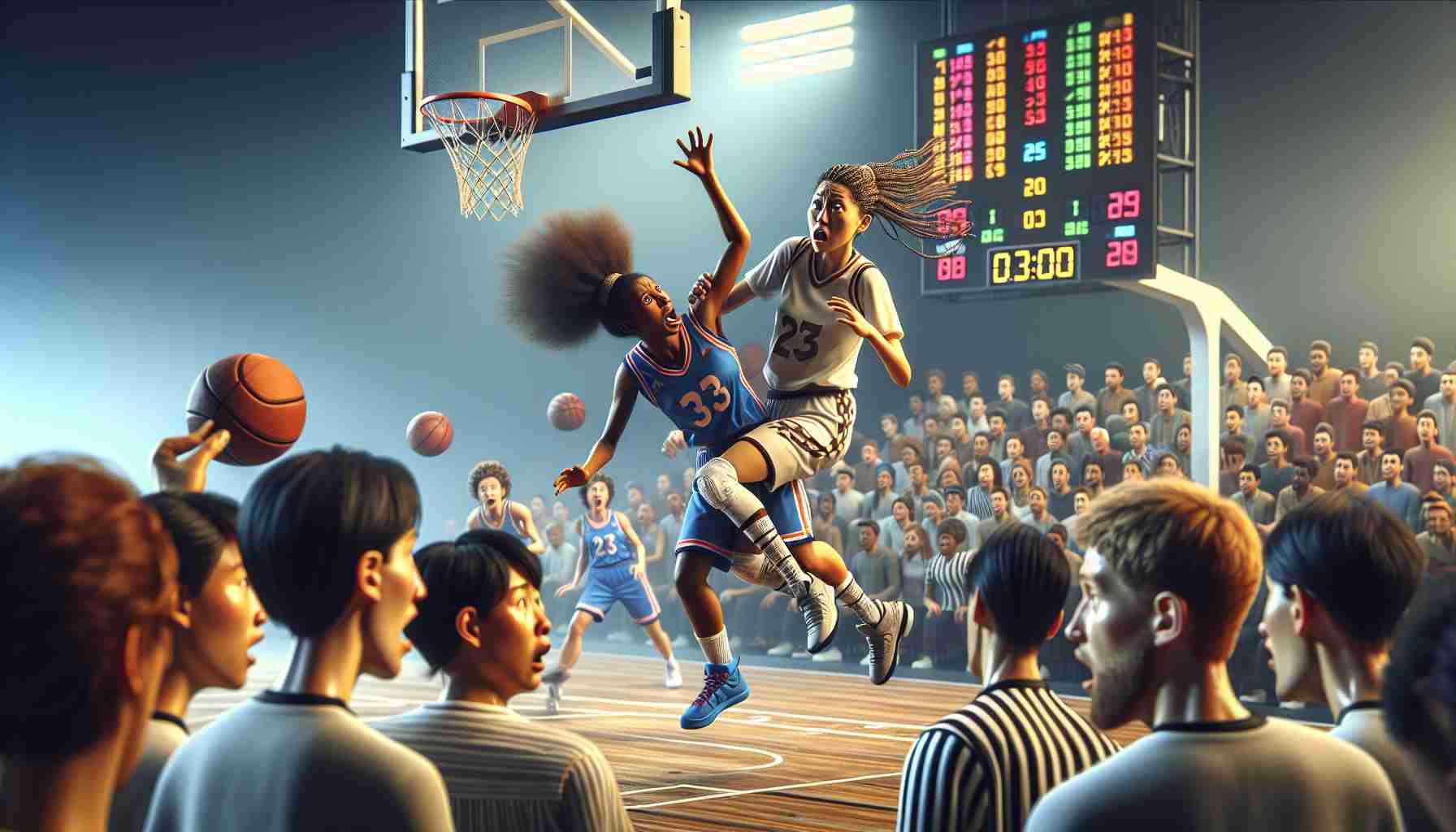
Shocking Revelations in Women’s Basketball! Are Athletes Safe?
The women’s basketball world is facing unsettling realities as athletes speak out about safety concerns following Caitlin Clark’s alarming stalking incident. Just weeks ago, a man confessed to stalking another prominent player, Paige Bueckers, highlighting a troubling trend.
As the new 3-on-3 league, Unrivaled, prepares to launch, players are voicing their apprehensions about personal security. Connecticut Sun’s DiJonai Carrington has shared her distress over receiving cyberthreats, explaining the need for heightened vigilance when out in public. She expressed sorrow over the situation but remains determined to prioritize personal safety amidst these challenges.
Meanwhile, New York Liberty’s Breanna Stewart highlighted the importance of being cautious with social media. She emphasized that posting in real time can inadvertently reveal their locations, increasing the risk of unwanted attention.
Carrington’s teammate, Aliyah Boston, voiced her fears, admitting that such threats put undue stress on players and their families. They rely on robust security measures but feel the need for continuous support and monitoring.
Additionally, Unrivaled co-founder Napheesa Collier confirmed that safety discussions among players have become imperative.
Recently, Caitlin Clark’s alleged stalker made headlines after being formally accused and asserting his guilt during court proceedings. With serious charges pending, athletes are urging for better protective measures to ensure the safety and well-being of all players involved in the sport.
Safety in Women’s Sports: A Urgent Call for Systemic Change
The recent incidents of stalking and safety concerns in women’s basketball have ignited crucial conversations about the overall treatment and protection of female athletes in sports. As conversations around safety intensify, the implications for society and culture become increasingly clear. The collective voices of players like Caitlin Clark, Paige Bueckers, and others highlight a pervasive issue of vulnerability that extends beyond the court, raising alarm bells for a sport that is rapidly gaining popularity and visibility.
The cultural ramifications are significant. As female athletes gain prominence in media and advertising, they also face an increased risk of harassment and unwanted attention. This troubling duality may deter potential athletes from pursuing careers in professional sports, thereby impacting the overall diversity and inclusion within the industry. It casts a shadow over the progress made in the realm of gender equality in sports, suggesting that success for women athletes comes with severe personal costs.
In terms of global economics, the rise of leagues like Unrivaled signifies a growing market for women’s sports, yet the safety of athletes must be prioritized to sustain this momentum. Athletic organizations and sponsors need to adopt more rigorous safety protocols to ensure a secure environment for these athletes. Implementing comprehensive training programs and support systems might not only protect players but also foster a more positive public perception and encourage greater investment in women’s sports.
Looking to the future, the push for enhanced safety measures will likely transcend basketball, influencing the policies of various sports leagues worldwide. As these discussions continue, the long-term significance lies in the potential for fostering a safer, more supportive culture for future generations of athletes, ensuring that their talents can shine without the overshadowing threat of harm.
Women’s Basketball Safety: A Growing Concern Amid Rising Threats
The Alarming Reality of Stalking Incidents in Women’s Basketball
The world of women’s basketball is increasingly grappling with serious safety concerns, as recent events have highlighted troubling patterns of harassment and stalking. Notable incidents involving prominent athletes, including Caitlin Clark and Paige Bueckers, have underscored the urgent need for enhanced security measures. This issue not only affects the athletes but also their families and fans who care deeply about their well-being.
The Impacts of Cyberthreats and Real-time Social Media
As athletes prepare for the launch of the new 3-on-3 league, Unrivaled, they are voicing their concerns about personal security in today’s digital age. DiJonai Carrington, a standout player for the Connecticut Sun, has openly discussed the distress caused by receiving cyberthreats. Her experience sheds light on the necessity for athletes to exercise caution, especially when utilizing social media platforms.
Breanna Stewart, of the New York Liberty, echoed these sentiments, cautioning her fellow players about the risks associated with sharing real-time updates. Athletes’ locations can inadvertently be revealed, making them more vulnerable to unwanted attention and threats from individuals with malicious intentions.
The Call for Better Protective Measures
The shift in focus towards personal safety has left players like Aliyah Boston feeling stressed about their well-being and that of their loved ones. These concerns have catalyzed discussions around the implementation of more rigorous safety protocols within the league. Napheesa Collier, co-founder of Unrivaled, noted that safety conversations among players have become central to their community, reflecting a shared urgency to tackle these pressing issues.
Pros and Cons of Increased Security in Women’s Sports
Pros:
– Enhanced Athlete Protection: Implementing stricter security measures significantly improves the safety of players in and out of venues.
– Increased Awareness: Addressing these issues raises public consciousness about the risks athletes face, fostering a supportive environment.
– Empowered Athletes: When players feel safe, they can focus more on their performance and the game, resulting in better overall play.
Cons:
– Privacy Concerns: Increased security may necessitate monitoring, which could infringe on personal freedoms and privacy.
– Financial Implications: Enhanced security measures may require additional funding, potentially straining league budgets.
– Psychological Impact: Constant security concerns can add stress and anxiety, which may affect players’ mental health.
Looking Ahead: Innovative Solutions for Safety
Moving forward, the women’s basketball community must collaborate with law enforcement and security experts to develop innovative strategies that protect players while respecting their autonomy. Possible solutions could include:
– Enhanced Training for Security Teams: Ensuring that security personnel are trained to handle specific issues related to athlete safety can make a significant difference.
– Stronger Legal Consequences: Advocating for tougher legal repercussions for stalking and harassment can deter potential threats against athletes.
– Technology Utilization: Leveraging technology, such as personal safety apps and location tracking features, can help players maintain awareness of their surroundings and ensure quick responses to threats.
Conclusion: A Collective Responsibility
As the dialogue surrounding safety in women’s basketball intensifies, it is crucial for stakeholders—including leagues, teams, fans, and lawmakers—to work collectively to create a secure environment for athletes. By prioritizing their safety and well-being, the basketball community can foster an atmosphere that celebrates the sport while safeguarding the inspiring women at its forefront.
For more insights into women’s basketball and how the league is addressing these safety concerns, visit wbca.org.















